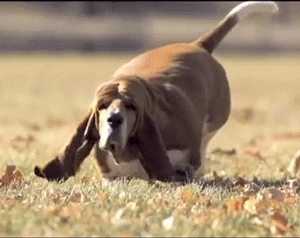

Hounding H
Emergent Literacy
Rationale
This lesson will help children identify /h/, the phoneme represented by H. Students will learn to recognize /h/ in spoken words by learning a sound analogy (pant like a hound dog) and the letter symbol H, practice finding /h/ in words, and apply phoneme awareness with /h/ in phonetic cue reading by distinguishing rhyming words from beginning letters.
Materials
Primary paper; pencils; crayons; Dr. Seuss’s ABC; word cards with HOG, HAND, HAT, HACK, HIP, MEAT, and SOUND.; assessment worksheet identifying pictures with /h/.
Procedures
1. The English language is a secret code that helps us communicate with each other. In order to do so, we must learn the sounds each letter makes and how to write them. Let’s listen to a few other sounds we have worked on. What sound does a make? /a/! Great job! What about F? /f/! What about H?....Today, we will be focusing on how to make the sound H and recognize it in spoken words. The letter H looks like a long dog. The dog has front paws and back paws and a body connecting the two ends, just like the letter H.
2. Let’s practice panting like a dog: /h/, /h/, /h/. Notice how your mouth is open, no teeth are touching, and you are blowing air through the opening in your mouth.
3. Let’s look for the /h/ in HAND. Listen to what I do and let’s work on it together. HAND. HHAA---NN-DD. Let’s stretch it out more. HHH---AAAA---NNN---DDDD. Did you notice it? It is at the beginning! Huffing H is in the beginning of HAND!
4. Now, let us look at a tongue tickler. Harry has not been feeling well. There was a dog near him, and Harry got upset. What happened? Let us look at the tongue tickler: “Harry had a horrible headache and hated to hear Henry howl.” Now, we will say it three times to get a firm grasp on the tickler..... Now that everyone has the tickler, stretch out the H at the beginning of each word. “HHHarry hhad a hhhhorrible hhheadache and hhated to hhear HHHenry hhhowl.” This last time, break it off from the rest of the word: “/H/ arry /h/ ad a /h/ orrible /h/ eadache and /h/ ated to /h/ ear /H/enry /h/owl.”
5. [Now the students will take out a sheet primary paper and a pencil]. We will use the letter H to spell /h/. Capital H looks like a hound dog with its front legs, back legs, and then a body connecting both ends. Let’s learn to write lowercase h. Start with your pencil on the rooftop and draw a straight-line down to the sidewalk. Take your pencil back to the fence and make a hump and then go back down to the sidewalk. After I put a star on your work, I want you write the letter h again nine more times.
6. Let’s go through some words. Call on students to answer whether they hear /h/ in hips or back? Hand or neck? Hippo or lion? Can you spot the mouth move for /h/ in these words? Happy, hippo, foot, leg, hat.
7. Let’s look at Dr. Seuss's alphabet book. Dr. Seuss tells us about a few different animals in his book. Are you ready to find out what they are? Read the page while drawing out the /h/: “Hungry horse. Hen in hat.” Have your students make up funny names with invented spelling while using the letter h. Then have them draw a picture to display their creative art.
8. Show HOG and model how to decide if it is HOG or LOG. The H tells me to open my mouth and blow air through, /h/, so the word is hhh-og, hog. Now let the students try. HAT: hat or mat? HACK: pack or hack? HIP: hip or dip? MEAT: Meat or heat? SOUND: SOUND or HOUND?
9. The last part of the lesson is the assessment. Pass out the worksheet for H. Have the students color the pictures and follow the lines to write H. Call the students up individually to go over the words in step 8.
References
Autumn McCarley, Huffing H https://afs0024.wixsite.com/mrsmccarley/emergent-literacy
Resources
Tongue ticklers. http://wp.auburn.edu/rdggenie/home/materials/ticklers/.
Assessment worksheets. https://www.kidzone.ws/prek_wrksht/learning-letters/h.htm.
Seuss, Dr. Dr. Seuss’s ABC. New York: Beginner Books, 1963.
Click here to go to the Communications Index
